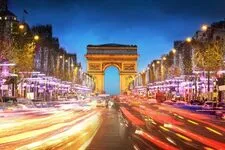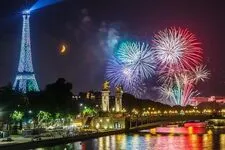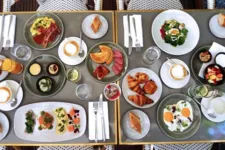Saint-Ouen Flea Market

At the gates of Paris, the Saint-Ouen Flea Market is the largest concentration of antique dealers and second-hand traders in the world. Alongside antique shops, second-hand clothing stores and fancy goods shops abound in the narrow streets of the Flea Market.
A Bit of History...
In the late 19th century, scavengers, thieves, and ragpickers roamed the streets of Paris to gather their loot. Exasperated, the Paris municipality decided to take the matter into their own hands and expel the undesirables from the capital. The ragpickers then chose to establish their quarters north of Paris, between the city walls and the village of Saint-Ouen. The encampment grew and gradually transformed. The guinguettes (open-air taverns) that were set up there and the numerous small shops that opened their doors quickly made the place a popular destination where Parisians and Sunday strollers loved to wander and have a drink. Between 1905 and 1914, the press took a closer interest in these unique places and greatly contributed to their reputation. Many merchants rushed there to open their businesses. The Flea Market was born.
Twenty years later, after the First World War, businesses settled permanently and the Biron, Vernaison, Malik, and Vallès markets were created. Afro-American music imported from across the Atlantic reached the gates of Paris thanks to the Gypsies who played the guitar at the markets. From then on, Gypsy jazz would remain deeply intertwined with the identity of the Flea Market.
The second half of the 20th century saw antique dealers and collectors replacing the former ragpickers and scrap dealers who had taken over the place at the beginning of the century. New markets emerged, each with its own specificity: from high-end antiques to dusty trinkets, everything can be found there. The Parisians love the popular atmosphere that reigns at the Flea Market, with its small bistros, restaurants, vintage clothing and antique book sellers, games, and carefree guinguettes.
The Flea Market Today
The Saint-Ouen Flea Market has become one of the most popular destinations for tourists in the Île-de-France region, with millions of visitors each year strolling through the streets and around fifteen markets in the Flea Market district. Visitors are welcomed every Saturday, Sunday, and Monday, throughout the year. Everyone comes to unearth the unusual object of their dreams and enjoy the timeless atmosphere of the place. The seven hectares, fifteen markets, and nearly 2,000 vendors of the Saint-Ouen Flea Market continue to attract curious visitors from around the world. Serious collectors will find what they're looking for thanks to the great diversity of shops in the Flea Market, while lovers of spontaneous walks will be delighted to wander through its small popular and lively streets. This market is sometimes covered, sometimes open-air, and features two types of vendors: merchants selling clothing (handmade or second-hand) and antique dealers or second-hand traders.
When you go bargain hunting, don't hesitate to haggle: it's part of the game and perpetuates the spirit of the Flea Market. Finally, you can grab a quick bite to eat in food trucks or small eateries where accordion tunes accompany the meal. Among them, "La Chope des Puces" is a small café-restaurant that has made a name for itself over the years by organizing popular concerts highly appreciated by strollers. It's time to go treasure hunting! Just keep your eyes wide open and search for your "heart's desire" item.





